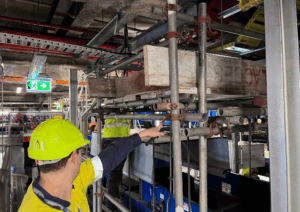Lifting Productivity from the Ground Up
How project engineering keeps NZ manufacturing efficient, safe, and moving
Caliber Design, Christchurch
Productivity is one of the most talked-about issues in New Zealand manufacturing. We all want to do more with less: more output with fewer delays, more progress with leaner teams, and more innovation with limited budgets.
Yet productivity is not only about machines or technology. It is just as much about how projects are delivered.
Every year, manufacturers invest millions in upgrades, automation, and plant improvements. Whether those projects add real productivity depends on one thing: how well design transitions to delivery. That is where project engineering makes a quiet but measurable difference.
Planning that prevents waste
Every successful project needs more planning than just a timeline. A good project engineer will identify risks early, validate the scope and technical deliverables, and plan sequencing so that the right work happens in the right order.
We saw this recently on a multi-site upgrade where the factory could not afford any unplanned downtime. By mapping out isolations, access, and parallel work streams, the project engineer saved two weeks on installation and avoided a costly mid-project rework.
These savings rarely show up as headlines, but they result in less time lost to rework, fewer hours spent chasing decisions, and smoother commissioning.
Coordination that keeps people productive
Even the best design will stall without good coordination. Modern manufacturing projects bring together multiple suppliers, contractors, and compliance demands. Someone has to keep the stakeholders all aligned on the actual deliverables for successful execution.
On a large materials-handling project, one of our project engineers managed more than 20 subcontractors. Rather than reacting to site issues, they held short daily stand-ups with each trade, resolved bottlenecks on the spot, and kept everyone working to a clear, shared schedule.
The project finished ahead of plan and within budget.
That kind of disciplined coordination is a productivity gain in itself. Every contractor knows what they are doing and when. Issues are handled before they grow. And the client gets to focus on running their business instead of chasing progress updates.
Design meets delivery
Caliber project engineers are designers first. Grounded by technical knowledge and wide-ranging experience, they understand the intent behind the drawings and can see where problems might occur in fabrication or installation.
Project engineers apply a wide lens across all deliverables yet can zoom into the details that have the potential to cause headaches.
In one case, a packaging line upgrade was designed to integrate with existing conveyors. The project engineer spotted a clash between the new frame and existing ducting—something that would have caused a week of downtime if discovered on site.
By catching it early, the team avoided extra cost and disruption.
That blend of design knowledge and delivery focus is what makes project engineers valuable to manufacturers. It is not just about keeping projects on schedule. It is about ensuring every hour of effort counts.
Consistency that compounds
Productivity also comes from repeatable systems: templates, processes, and reporting rhythms that let teams spend less time reinventing the wheel.
Across the projects we support, Caliber engineers use shared reporting formats and consistent document control, so information moves faster between site, client, and suppliers. That structure builds momentum.
Teams learn from each other’s work, avoid repeating mistakes, and raise the baseline for every new project.
It is a small detail that compounds over time. A 5% gain in efficiency on every project soon becomes a major lift in overall output.
People who make projects work
Ultimately, project engineering is about people. When contractors have clear direction, when designers know their work will be delivered well, and when clients trust progress reports, everyone works more efficiently.
Manufacturing is built on teamwork between disciplines, companies, and sites. Project engineers sit at the centre of that network, turning complexity into action.
In an environment where skilled labour is tight and every hour of downtime is expensive, that coordination is not a luxury. It is one of the strongest levers for productivity we have.
The takeaway
NZ manufacturers talk a lot about technology, automation, and innovation. Those are important. But it’s the discipline, foresight, and communication on the ground that often determines whether those investments pay off.
Good design sets the direction. Project engineering keeps it productive.



